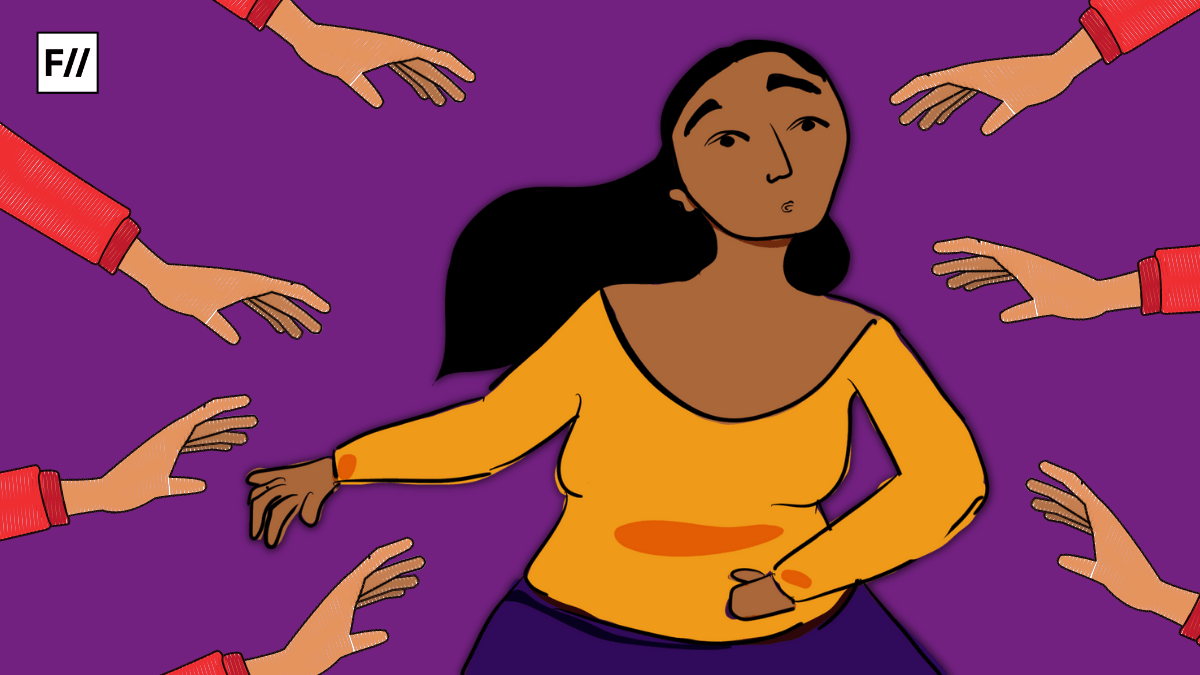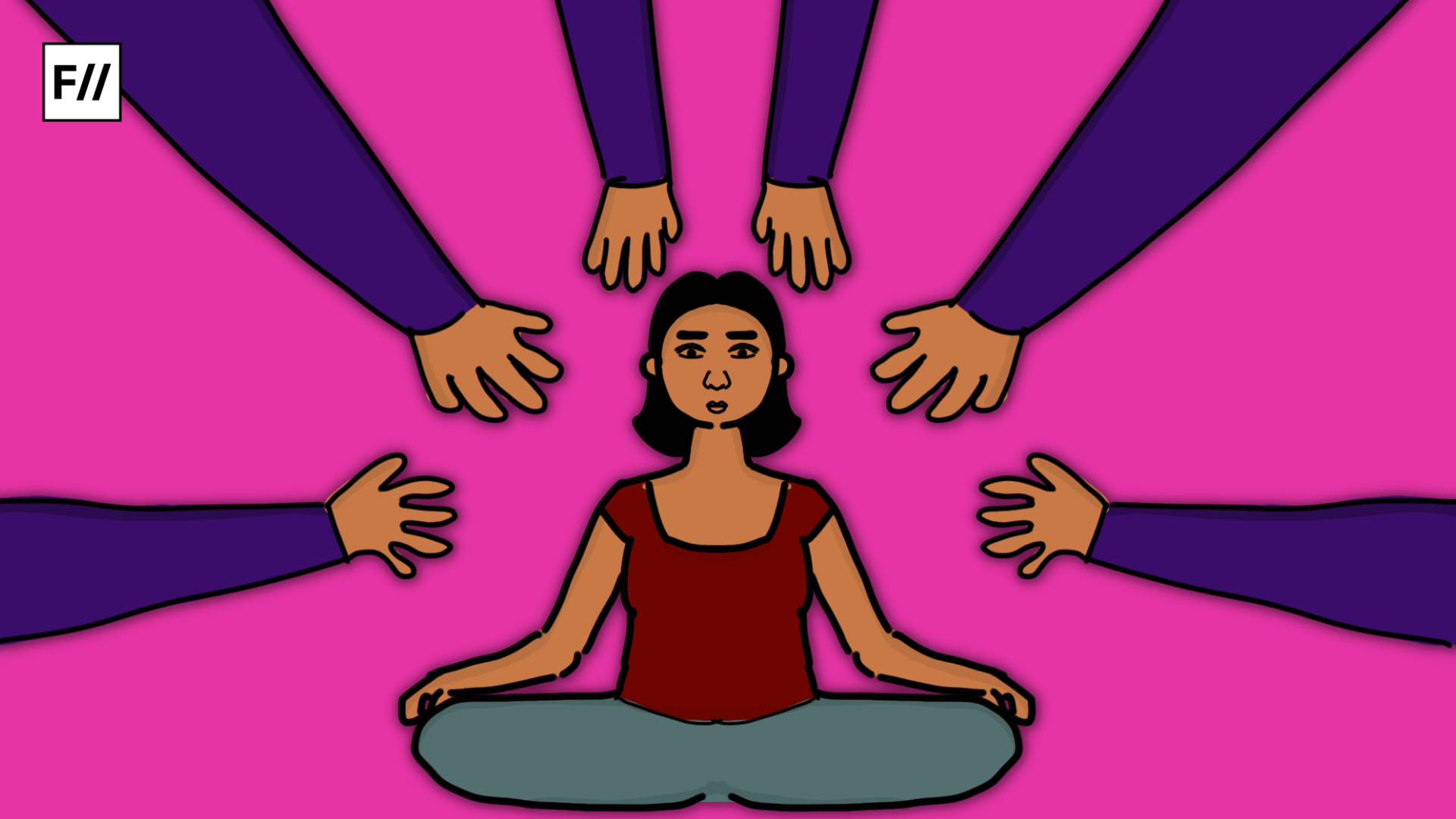In recent weeks, the safety of foreign tourists in India has once again come under scrutiny, with a particular focus on the unsettling incidents surrounding Kerala’s Thrissur Pooram festival. A viral video shared by a foreign vlogger couple has brought to light their distressing encounter with sexual harassment during the festivities. The footage, capturing a chilling moment as a man attempted to forcibly kiss the woman, has sparked widespread concern and reignited discussions on the treatment of tourists, especially women, within the country. In the video, the man also stated that a man in his 50s sexually assaulted him, prompting him to push the assailant away.
A viral video shared by a foreign vlogger couple has brought to light their distressing encounter with sexual harassment during the festivities.
The Thrissur Pooram incident has prompted a critical examination of India’s cultural ethos, encapsulated in the revered principle of ‘Atithi devo bhava’ (the guest is equivalent to God). While festivals like Thrissur Pooram are celebrated as vibrant cultural showcases, the disturbing events captured in the video raise questions about the practical application of this principle and the measures in place to ensure the safety and dignity of all visitors.
In parallel, the troubling case of a Spanish tourist raped in Jharkhand has added another layer of complexity to the conversation surrounding tourist safety in India. This separate incident, occurring in a tranquil rural setting, serves as a stark reminder of the vulnerabilities faced by tourists, particularly women, regardless of their location within the country.

As these incidents unfold, they reveal common threads woven into the fabric of India’s tourism landscape, urging a collective response to address underlying systemic issues. Amidst these challenges, prioritising the grievances brought to light by the Thrissur Pooram incident emerges as a crucial imperative. It calls for decisive actions aimed at ensuring the safety and welfare of every visitor to our nation. Yet, as we navigate this terrain, a pressing question looms: Can India rise to the occasion and uphold its commitment to providing a secure environment for women travelers?
Analysing the incident and addressing cultural norms and safety of tourists
The harassment at Thrissur Pooram brings to the forefront the imperative of safeguarding the dignity and security of all tourists, irrespective of nationality or gender. While festivals like Thrissur Pooram are celebrated as cultural showcases that attract global attention, the safety and comfort of attendees are paramount to upholding the destination’s reputation and sustaining the tourism industry.
Embedded within Indian culture, the principle of ‘Atithi devo bhava’ underscores the reverence and hospitality extended to guests, reflecting a deep-rooted ethos of welcoming and honoring visitors. However, recent incidents have raised pertinent questions about the practical application of this ethos, particularly concerning the safety of female tourists. While hospitality remains integral to India’s cultural fabric, it must be complemented by robust measures aimed at ensuring the safety and dignity of all visitors. This requires aligning traditional values with modern standards of inclusivity and protection, emphasising the need for comprehensive strategies to address the evolving challenges faced by tourists in India.

In light of these incidents, it is evident that a concerted effort is needed to bridge the gap between cultural values and the practical realities of ensuring tourist safety and security. This includes enhancing law enforcement, improving infrastructure, and promoting awareness among both locals and tourists. Only through such collective action can India truly uphold its reputation as a welcoming and safe destination for tourists from around the world.
Did the police and authorities take necessary actions?
According to the reports, despite the couple’s public disclosure of the incident on social media, Kerala police reported no formal complaint was lodged regarding the matter. However, they did confirm the identification of the perpetrator. The absence of an official complaint raises concerns about the accessibility and effectiveness of reporting mechanisms, especially for tourists unfamiliar with local procedures, thereby highlighting potential gaps in ensuring the safety of visitors.
As a shame to the country rich in its diversity and culture, these revelations surrounding the Thrissur Pooram festival along with the lack of necessary steps taken for the concerned people, cast a shadow over its vibrancy, prompting critical inquiries into the efficacy of safety measures in place for visitors. These incidents also underscore the urgent need for proactive measures to enhance the safety and well-being of tourists attending such cultural events. Only through a concerted effort to implement robust safety measures and foster a culture of respect and accountability can India truly fulfill its promise as a welcoming destination for tourists from around the world.
How safe is our country for women tourists?
This is not an isolated incident. Another horrendous incident involving a Spanish tourist who was raped in Jharkhand serves as a stark reminder of the vulnerabilities faced by women tourists in India.

According to the reports, a 28-year-old woman was allegedly gang-raped at Kurumahat in the Hansdiha police station area, situated approximately 300 kilometres from the state capital of Ranchi. The incident occurred on 1st March while she was spending the night in a tent with her husband. This harrowing account underscores the pervasive dangers faced by tourists, particularly women, and highlights the urgent need for measures to ensure their safety and well-being.
What does the official data say about gender based violence?
The reports and statistics from the National Crime Record Bureau of India paint a sobering picture of the challenges faced by women in the country. In 2019 alone, a staggering 405,861 cases of crime against women were registered, highlighting the pervasive nature of gender-based violence. Among these cases, 88,367 were classified as assaults on women with the intent to outrage their modesty, while 105,037 involved kidnapping and abduction. Shockingly, 32,033 cases of rape were reported, equating to one rape every 16 minutes, with an additional 3,944 cases registered as attempts to rape.
These figures underscore the urgent need for comprehensive measures to address gender-based violence and ensure the safety and security of women across India. Moreover, India’s poor ranking in the global gender inequality index and its designation as the world’s most dangerous country for women in a Thomas Reuters perception poll in 2018 further underscores the severity of the issue and the imperative for concerted action to address it.
Despite ongoing efforts to promote tourism and portray India as a safe destination, incidents of harassment and violence persist, casting a shadow over the country’s image.
Despite ongoing efforts to promote tourism and portray India as a safe destination, incidents of harassment and violence persist, casting a shadow over the country’s image.

For female tourists, regardless of their origin, navigating unfamiliar surroundings can be fraught with risks, ranging from verbal harassment to physical assault. These distressing incidents not only endanger the immediate safety of the victims but also undermine trust in India’s capacity to safeguard its visitors. As a consequence, such events stain the nation’s reputation and dissuade prospective tourists from immersing themselves in its vibrant cultural tapestry and breathtaking landscapes, especially when the cherished principle of ‘Atithi Devo Bhava’ (the guest is equivalent to God) is held in high regard but not practiced.
The urgency to address these challenges and cultivate a safer environment for all tourists, irrespective of gender, cannot be overstated. Enhanced law enforcement efforts must be implemented as a deterrent to potential perpetrators, ensuring that those who engage in harassment or violence are swiftly held accountable for their actions. Simultaneously, comprehensive awareness campaigns are essential to educating both local communities and visitors on the importance of respectful behavior and the available reporting mechanisms.
The urgency to address these challenges and cultivate a safer environment for all tourists, irrespective of gender, cannot be overstated.
Moreover, it is imperative to bolster support systems to provide timely assistance and resources to those in need. Access to emergency services and victim support resources must be improved to ensure that individuals who experience harassment or violence receive the necessary assistance and can begin the process of recovery without delay.




